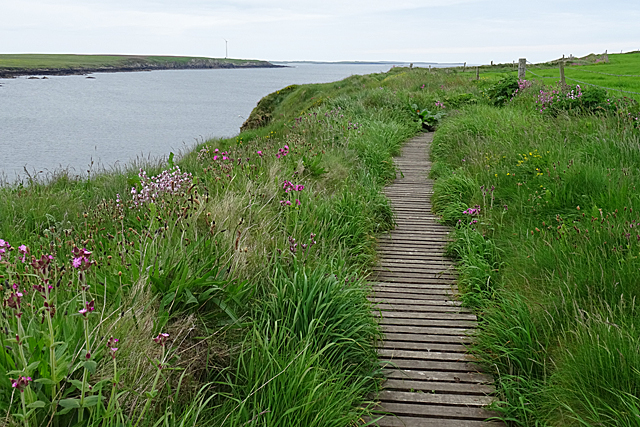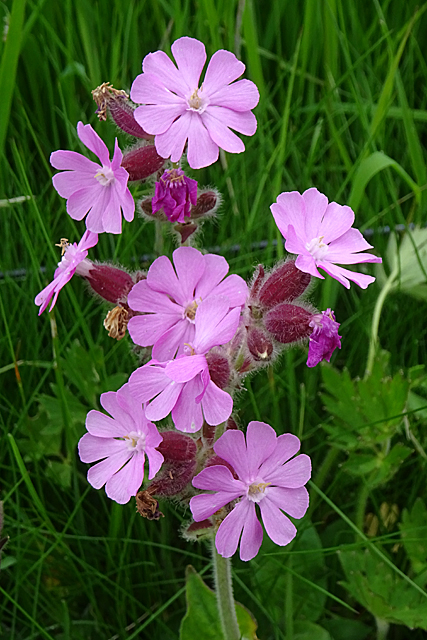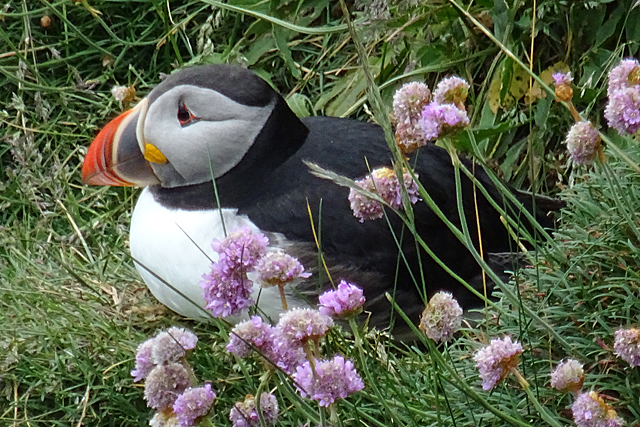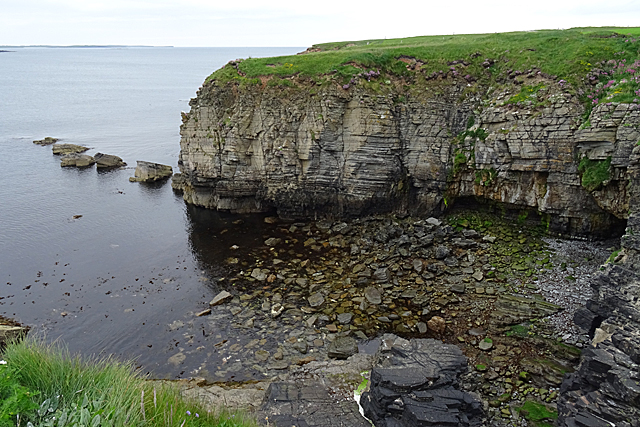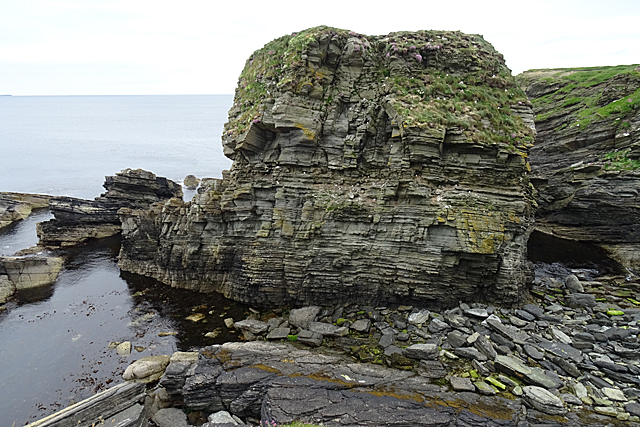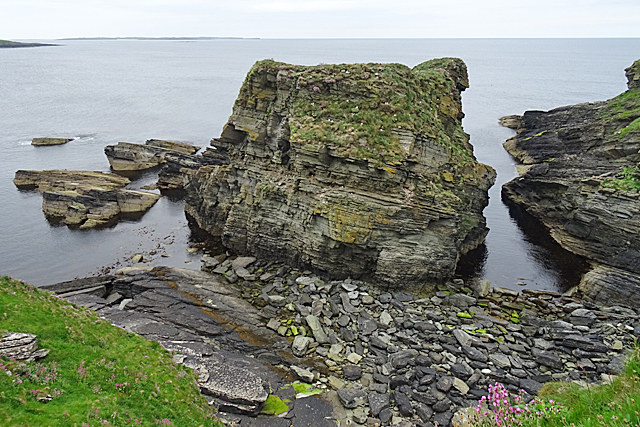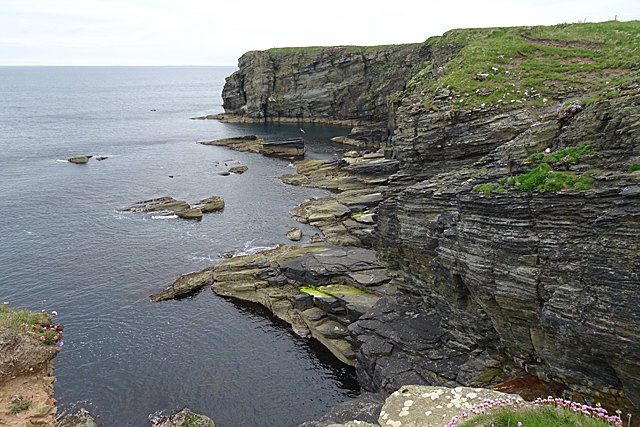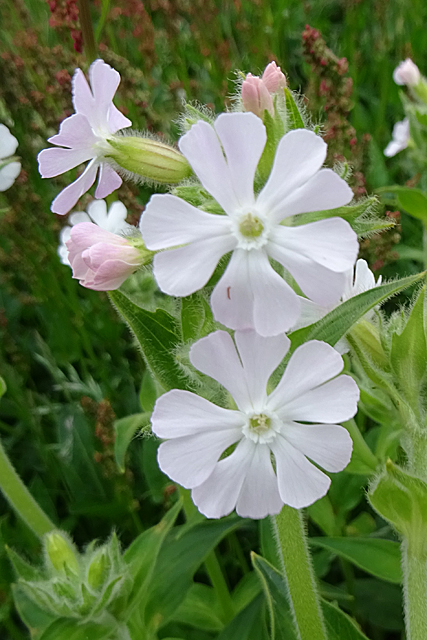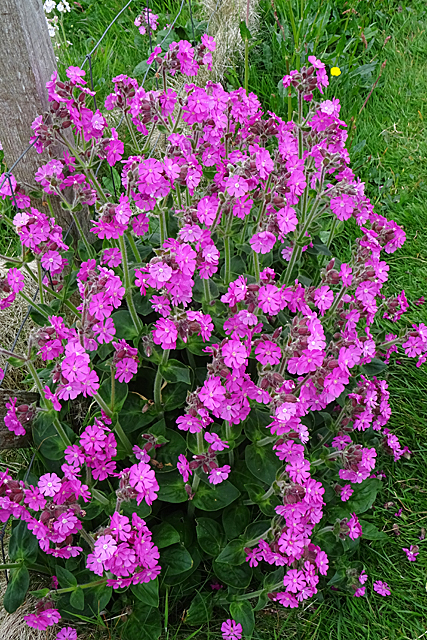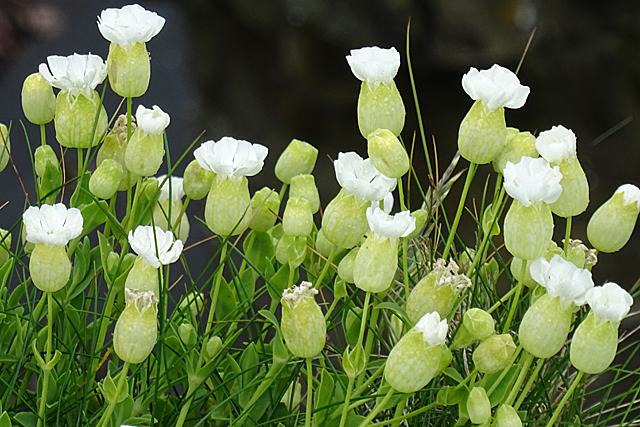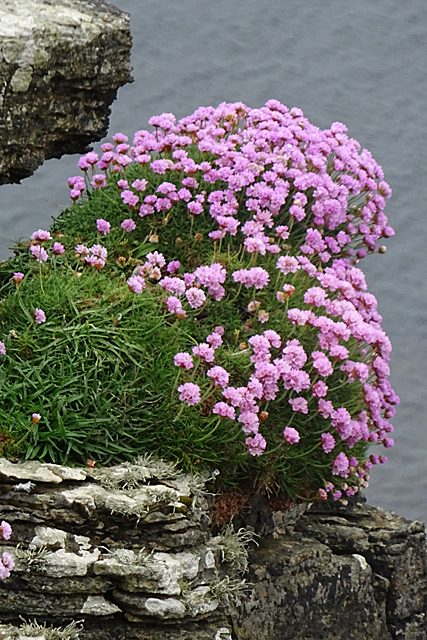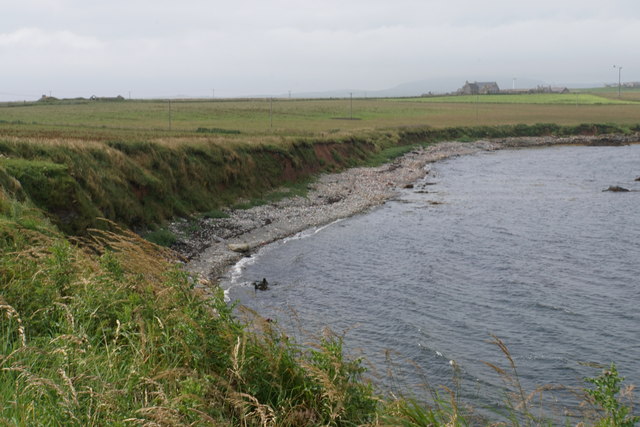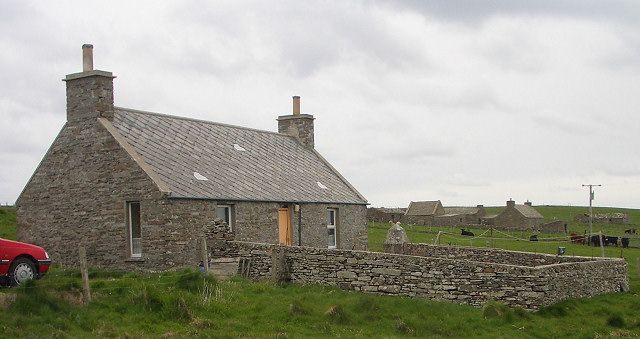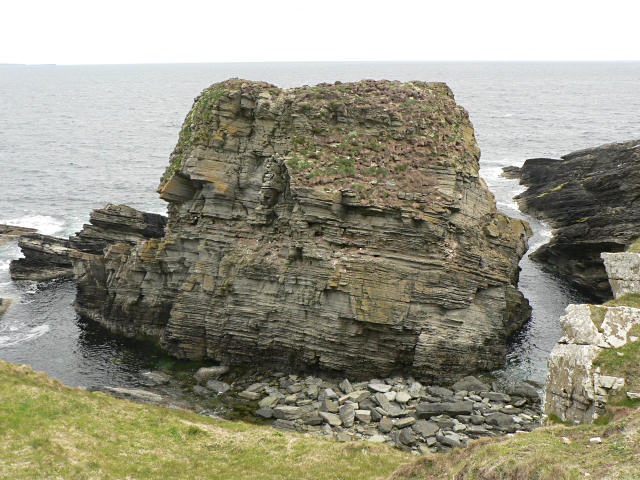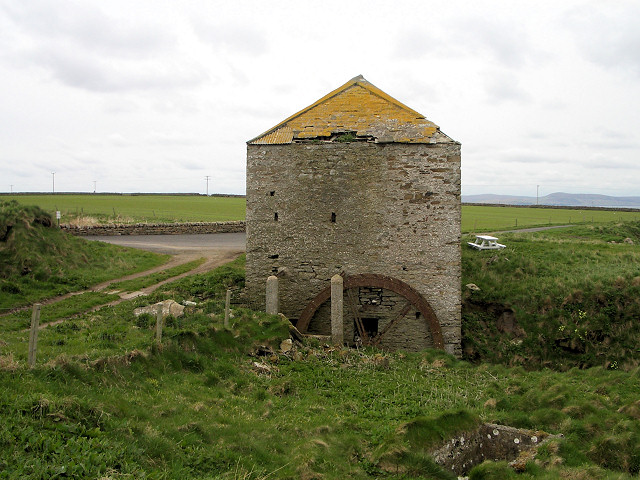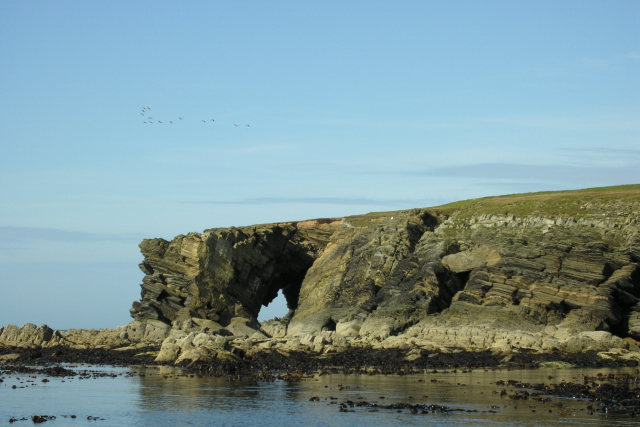Stynie
Coastal Feature, Headland, Point in Orkney
Scotland
Stynie
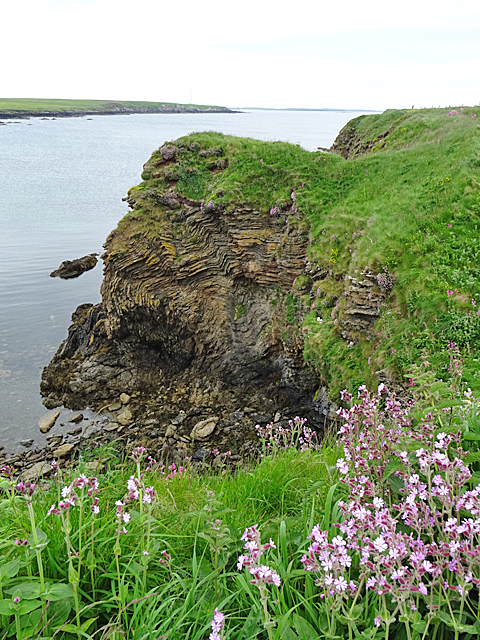
Stynie is a prominent coastal feature located in Orkney, an archipelago situated off the northeastern coast of Scotland. It is specifically classified as a headland or point due to its unique geographical formation.
Situated on the northern coast of the Orkney Mainland, Stynie juts out into the North Sea, offering breathtaking views of the surrounding coastline. It is characterized by its rugged cliffs, which rise steeply from the sea, providing a dramatic backdrop against the crashing waves below. The cliffs are composed of sandstone and are known for their distinctive red coloration, adding to the scenic beauty of the area.
Stynie is a popular destination for nature enthusiasts and outdoor adventurers. Its location on the coast provides ample opportunities for activities such as birdwatching, as the area is home to various seabird species like puffins, guillemots, and kittiwakes. Additionally, the surrounding waters are frequented by seals and dolphins, further enhancing the wildlife viewing experience.
The headland is also a favored spot for hiking and walking, with several well-marked trails leading visitors along the cliff tops and offering panoramic vistas of the North Sea. The picturesque landscape, combined with the rich history of the Orkney Islands, makes Stynie an ideal destination for those seeking both natural beauty and cultural exploration.
Overall, Stynie serves as a captivating coastal feature, offering visitors a chance to immerse themselves in the stunning scenery and diverse wildlife of the Orkney Islands.
If you have any feedback on the listing, please let us know in the comments section below.
Stynie Images
Images are sourced within 2km of 59.261304/-2.893661 or Grid Reference HY4941. Thanks to Geograph Open Source API. All images are credited.
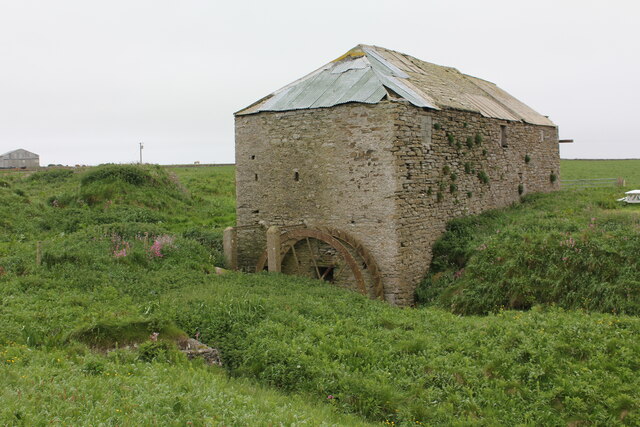
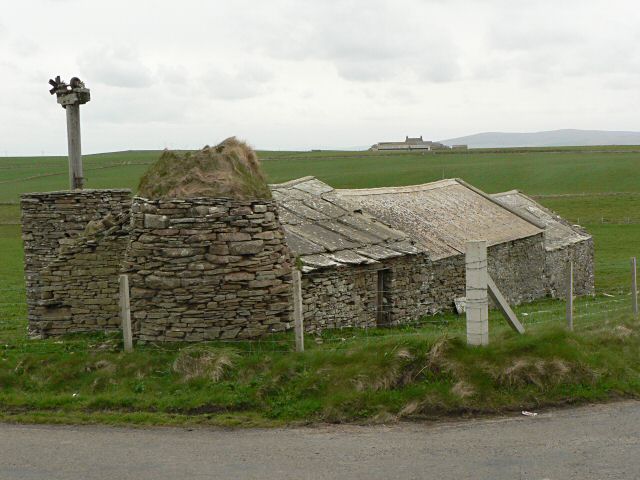
Stynie is located at Grid Ref: HY4941 (Lat: 59.261304, Lng: -2.893661)
Unitary Authority: Orkney Islands
Police Authority: Highlands and Islands
What 3 Words
///shuffle.butlers.haystack. Near Pierowall, Orkney Islands
Related Wikis
Rapness
Rapness is a settlement on the island of Westray in Orkney, Scotland. The slipway is the ferry terminal for the Orkney Ferries crossing from Kirkwall on...
Westside Church
Westside Church, (also known as Cross Kirk), is a ruined 12th century church located on the island of Westray in Orkney, Scotland. Archaeological excavations...
Holm of Faray
The Holm of Faray is a small island in Orkney, Scotland, near Faray and Westray, which it lies between. Together with its neighbour Faray, it is designated...
Rusk Holm
Rusk Holm is a small island in the Orkney Islands, near Faray to the west. == History == There is a prehistoric cairn on it . Rusk Holm is also home to...
Nearby Amenities
Located within 500m of 59.261304,-2.893661Have you been to Stynie?
Leave your review of Stynie below (or comments, questions and feedback).
